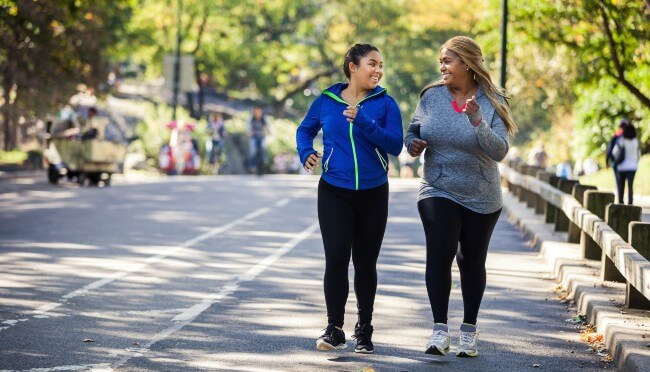Built Environment: NCCDPHP’s Program Successes

On This Page: Lake Charles, Louisiana | New York

The “built environment” refers to human-made surroundings that influence overall community health and people’s behaviors that drive health. For example, communities with parks and walking paths make it easier for people to be active. A person’s built environment can determine whether they exercise safely, buy healthy food, or drink clean water. That’s why it’s one of the key social determinants of health (SDOH).
CDC’s National Center for Chronic Disease Prevention and Health Promotion funds partners to improve the built environment as part of our work to achieve health equity. Following are examples of successful projects.
Lake Charles, Louisiana, Adds 6 Miles of Walking and Biking Paths
Being overweight or obese increases the risk for at least 13 kinds of cancer. In 2014, over 630,000 people in the United States were diagnosed with one of these cancers. Physical activity is an essential component of weight control, and physical inactivity is independently linked to some kinds of cancer.
Louisiana has one of the highest rates of obesity (36%) in the United States, and Lake Charles, Louisiana, has a combined overweight and obesity rate of almost 70%.
To reduce obesity in Lake Charles, the Partnership for Healthier Southwest Louisiana, the Louisiana Comprehensive Cancer Control Program, the Calcasieu Parish Police Jury, the Southwest Louisiana Economic Alliance, the City of Lake Charles, and the Imperial Calcasieu Metropolitan Planning Organization formed a coalition and started gathering community feedback.
Residents identified walkability and bikeability as an important priority for physical activity, so the coalition chose to implement Complete Streets. Complete Streets initiatives create a culture of health by safely and conveniently linking people to schools, parks, and businesses. They also slow traffic, which reduces pedestrian fatalities.
Coalition partners started with a community training and information session to share successes in similar settings. The training educated local businesses, politicians, and community organizations, along with regional leaders, who learned about Complete Streets for their own parishes and municipalities. The partners also used local print, online, and televised media to inform community members.
The coalition then hosted a Better Blocks event in May 2017 that featured temporary bike lanes, crosswalks, plantings, and media participation. Because participating families showed support and enjoyed being active during this event, the Lake Charles City Council unanimously approved a Complete Streets ordinance on June 17, 2017. Lake Charles now has over 6 miles of painted bike lanes. Six other Louisiana communities followed suit, and the Louisiana Health Care Commission continues to promote the intervention in other communities.
By making walking and biking safer and more convenient, Lake Charles and other Louisiana communities are breaking down barriers to physical activity so that residents can maintain a healthy weight and reduce their risk of cancer and other chronic diseases.
New York State Physical Activity and Nutrition Program Improves Physical Activity Spaces at 302 Sites Statewide
Active people generally live longer and have less risk for serious health problems like heart disease, type 2 diabetes, obesity, and some cancers. For people with chronic diseases, physical activity can help avoid more serious illness or complications. But some communities lack safe spaces like parks and bike paths for people to be active.
The New York State Department of Health identified 245 communities across the state where better access to physical activity was needed. From September 2019 to September 2020, through the Creating Healthy Schools and Communities initiative, 25 local grantees and the NY Obesity Prevention Center for Excellence worked with partners to improve pedestrian and bicycle paths, street pattern design, and signage. They increased access to parks or shortened the distance to destinations at 302 sites. As a result:
- 647 potential and 67 actual miles of pedestrian and bicycle infrastructure were identified, created, or improved.
- 59 destinations were connected by activity-friendly routes because of new or improved Complete Streets policies or plans, reaching an estimated 244,602 residents.
- A year-long statewide Walking Challenge took place.
These changes will allow residents to walk and bike more safely using routes that connect where they live, work, and play.